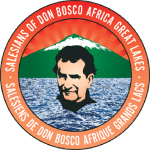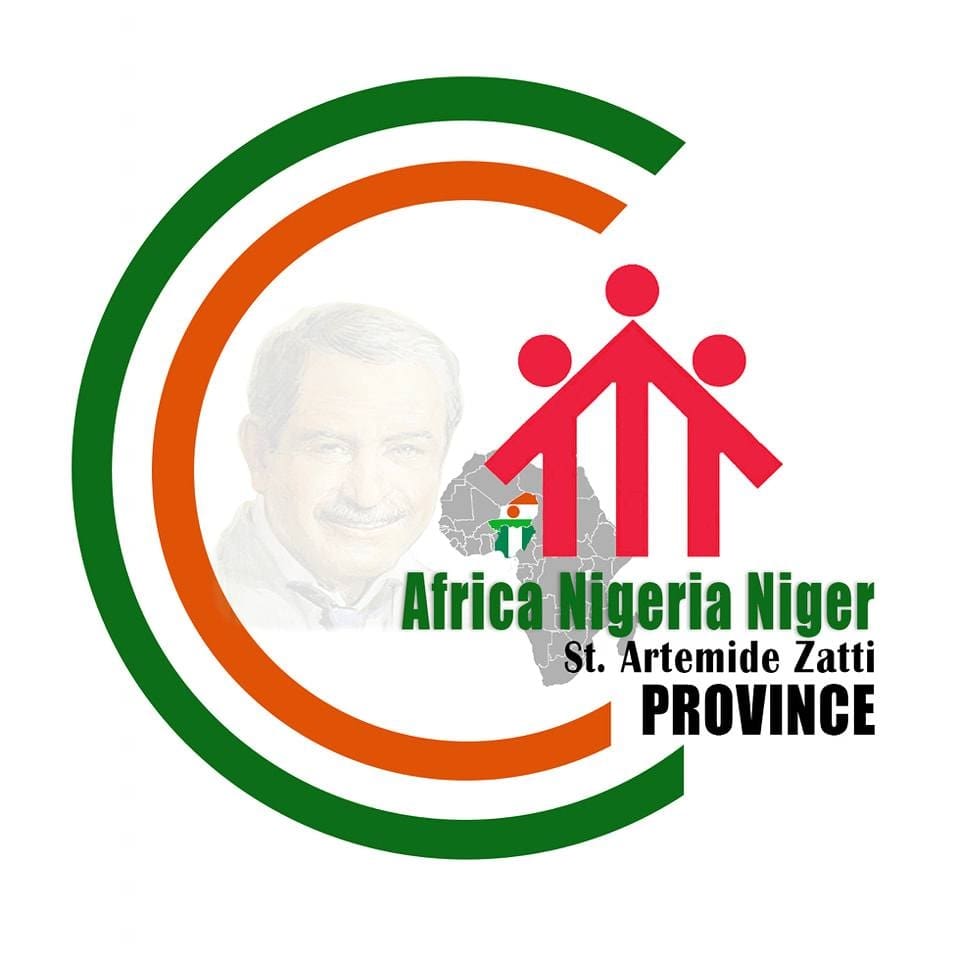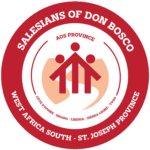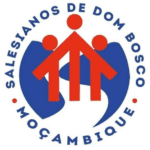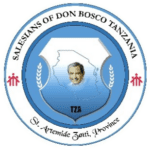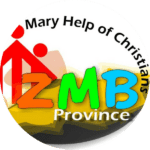John Bosco was born of Francis’ second marriage, with Margaret Occhiena. It was 16 August 1815 and he was baptised on the following day as John Melchior. His father was an employee of the Bigliones and lived in one of their farm houses at the Becchi in the district of Murialdo, a hamlet of Castelnuovo d’Asti. Struck down by pneumonia on 11 May 1817, Francis Bosco left his three sons in the care of his wife Margaret: Anthony, born 1808 of his first wife, Margaret Cagliero, Joseph, born 1813, and John.
This small family, having moved into a rustic shack re-adapted for habitation, spent some difficult years at a time of general disadvantage for the peasant community. John, who had been raised by his mother’s deep human and Christian intuitiveness, was equipped by Providence with gifts that made him a generous and diligent friend to his peers from a very early age.
Nevertheless, given the straitened family circumstances and tension with his step-brother because of his inclination to study, John was sent to work as a farmhand at the Moglia farm from February 1828 until November 1829. When he returned to the family, thanks to the support of the elderly chaplain Fr John Calosso he was able to pursue his primary schooling at Castelnuovo and his secondary years at the Royal College in Chieri.
From his childhood, John felt he had received a special calling and that he had been helped, almost guided by hand by the Lord and the motherly intervention of the Virgin Mary, to carry out a mission of his own. In a prophetic dream when he was nine years old they had pointed out his field of work and the mission he was to fulfil. Thus his boyhood years were in anticipation of an extraordinary vocation as educator and pastor. As an apostle amongst his school friends he founded the “Society for a Good Time” during his school years in Chieri. Ever since he was a small boy he had felt the call to conform himself as perfectly as possible to the model of Christ the Good Shepherd and this identification would mature over the course of his entire life, gradually embodying the priestly ministry in his very own way: as a sign of the Good Shepherd for the young and children of ordinary folk.
As a twenty-year-old he made a decisive choice in 1835 to enter the diocesan seminary at Chieri. His seminary years were spiritually demanding for him if for no other reason than that the disciplinary regime and rigoristic moral theology courses contrasted with a temperament given to more expansive freedom and a creative practical approach. At this seminary, John Bosco assimilated the values which the austere rules and formation tradition offered the young clerics: intense study, a spirit of sincere piety, recollectedness, obedience, inner and outward discipline. But he was able to count on the knowledge and awareness of Fr Joseph Cafasso, also a native of Castelnuovo and a collaborator of Dr (Fr) Luigi Guala in Turin at the Convitto or Pastoral Institute of St Francis of Assisi, aimed at improving the young cleric in pastoral practice. Until his own life ended, Cafasso was a teacher of moral theology and pastoral practice for Don Bosco, as well as confessor, spiritual director, adviser.
Ordained priest in Turin by Archbishop Luigi Fransoni in June, 1841, Don Bosco spent that summer and autumn between the Becchi and Castelnuovo helping the parish priest. In November his choice was to return to Turin to the Pastoral Institute, to complete the three years of theoretical and practical training. From there he received a theoretical, practical and pastoral qualification and strengthened his inner life. Some of the salient features of this priestly spirituality offered by Fr Cafasso were: the central place of service of the Divine, animated by a deep love for the Lord, the desire to be shaped by the Divine will, total availability for prompt, precise and polite service, a spirit of prayer, kindness and charity, poverty, and detachment, mortification, humility and intense work. There was also complete self-giving in the pastoral care of neighbour, tireless zeal in welcoming, approaching, seeking out, leading, exhorting, instructing, encouraging individuals of every age and category, especially the lowly, the little ones, the poor and sinners. There was leaning towards the mission, endless dedication to preaching, catechesis, the sacrament of penance; tender devotion to Mary, and a sense of belonging to the Church and devotion to the Pope and Pastors of the Church. As well as moral formation, the young priest dedicated himself to the catechetical instruction of children and accompanied Fr Cafasso in the spiritual assistance he gave to young men locked up in the city’s prisons.
Don Bosco as a young priest was also more and more involved in the profound and complex changes of a political, social and cultural nature that would mark his entire life: revolutionary movements, war and the exodus of the rural population to the cities were all factors impacting on the conditions of life of the people especially if they were people from the poorer stratum of society. Packed into the outskirts of the cities, the poor in general and young people in particular were subjected to exploitation or became victims of unemployment. They were inadequately followed up in human, moral, religious terms and in preparation for work. Often they were totally neglected. Sensitive to every change, the young people were often insecure and lost. In the face of these masses without roots, traditional education was at a loss. Philanthropists, educators, clergy of every kind were struggling to meet the new needs.
In October 1844 Don Bosco gained employment as chaplain first at a work known as The Refuge, and then at the Little Hospital of St Philomena, both women’s institutions founded by Julia Colbert, the Marchioness Barolo. Both places were in the northeast of the city, not far from the Little House of Divine Providence founded by Canon Joseph Cottolengo and close to Porta Palazzo, the huge city market. In his new residence Don Bosco welcomed boys who had grown fond of him at the Pastoral Institute: apprentices, roustabouts, students and boys flowing in increasing numbers from the countryside. Thanks to his own personal abilities, he engaged with them, becoming directly involved in their amusements and getting them to take part in opportunities for religious instruction and worship. He called these gathering at The Refuge “Catechism”, and once it became a stable thing he called it “The Oratory of St Francis de Sales”.
Equipped with a fine intuition into reality and a connoisseur of Church History, Don Bosco drew upon situations and experiences of other apostles, especially St Philip Neri and St Charles Borromeo, who gave him the formula for the “oratory”. This tern was especially dear to him: the oratory characterised all of his work and he would shape it according to his own original perspective, adapted to the setting, to his boys and their needs.
He chose St Francis de Sales as the principal patron and model for those who helped him. This was the saint of multifaceted zeal and a very human kindness which showed up especially in the way he treated people so gently. The oratory was ‘on the road’ between 1845 and 1846, though gravitating around the immediate area between the fields in Valdocco, then down near the Dora, and Porta Palazzo where it was easier to keep in touch with the boys. Don Bosco settled finally in Valdocco in the spring of 1846 first of all in a handful of rooms and a shed adapted as a chapel, rented in a building on the extreme outskirts (the Pinardi house); then the entire building and adjacent grounds were purchased later. In those years it certainly highlighted the relevance of the motto taken from St Francis de Sales, Da mihi animas caetera tolle (which he translated as “O Lord, give me souls and take away the rest”). He considered it so important and significant that he had it copied onto a poster that he kept hung up in his room until the end of his life.
The Valdocco oratory drew its inspiration from the Guardian Angel oratory, opened in 1840 by Fr Cocchi at the edge of the suburb of Vanchiglia. Given the favourable acceptance won by the first two oratories, a third named after St Aloysius was opened in 1847 in the Porta Nuova district. The work of the oratories which began in 1841 with a “simple catechism class” gradually expanded to respond to pressing circumstances and demands: a hospice to take in boys completely left to their own devices, and a workshop and classrooms for arts and trades to teach them a trade and render them capable of earning an honest living; recreational and other approaches proper to the time (theatre, band, choir, autumn walks) to encourage the boys’ healthy growth.
There was a period of crisis for the oratories in 1848; Fr. Cocchi leaned towards sharing the patriotic enthusiasm of the boys while Don Bosco continued to be more cautious and closer to the opposition which Archbishop Fransoni adopted as his position. Things picked up around 1850, thanks to the tenacity of clergy and lay people who worked alongside Don Bosco (amongst whom Fr J.B. Borel and cousins Robert and Leonard Murialdo). Through Fransoni’s initiative, though he was still in exile in Lyons, Don Bosco was appointed “head spiritual director” in 1852 of the three boys’ oratories in Valdocco, Porta, Nuova and Vanchiglia respectively. Given the increasing number of boys attending the oratories and with popular help and official support from the city authorities it became possible to replace the chapel ‘shed in Valdocco’ with a large Church named after St Francis de Sales (1851-52) and then Don Bosco set about buying new land and building a “house attached to the oratory” to house and educate both young students and apprentices in some of the more promising trades like tailoring (1853), bookbinding (1854), carpentry (1856) printing (1861) metalwork (1862).
Following the cholera outbreak in 1854, the youthful population accommodated in the house and classrooms at Valdocco rapidly passed the hundred mark, reaching more than eight hundred in 1868. It was in that year through Don Bosco’s initiative and efforts that a large Church dedicated to Mary Help of Christians (Auxilium Christianorum) was consecrated on the land at the Valdocco Oratory. It was for the use of the boys and the spiritual needs of the surrounding area. In 1869 in defence of, and to foster the faith of Catholics, he set up the Association of Devotees of Mary Help of Christians. All of these achievements allowed Don Bosco to launch a variety of appeals with a view to mobilising consensus and financial support. From 1853 he organised charity lotteries, bringing in enough funds to extend and improve the oratory buildings (all three oratories) and to accept young trade students and students for secondary classes gratis or nearly so. In appeals addressed to the population at large, he declared that he wanted to form “upright citizens and good Christians”. When he turned to political and local administration authorities he asked for support and aid aimed at preventing youth delinquency, taking boys off the streets who would otherwise end up in prison and forming citizens who would be useful to society. Then there were phrases that came together in his best known work on pedagogy: The Preventive System in the Education of the Young (Turin 1877). The felicitous line: “It is enough that you are young for me to love you very much” is the Saint’s own formulation and prior to that his fundamental educative choice: “I promised God that my last breath would be spent for my poor boys.” And, in truth he carried out impressive activity for them in words, writings, institutions, journeys, meetings with civil and religious authorities. He especially showed consideration for them as people so that through his fatherly love his young people might grasp the sign of a much higher Love.
Don Bosco also began to stand out for publishing a number of books aimed at the boys and republished on multiple occasions: Church History For Use in Schools (1847), The Companion of Youth (1847), The Metric Decimal System Made Simple (1849). In March 1853, with the support of Bishop L. Moreno of Ivrea, he began publication of the Catholic Readings/ a collection of pocket-sized periodicals averaging around a hundred pages, filled with articles written in a style easily accessible for the limited literacy of the world of the farmers and craftsmen. Don Bosco used the Catholic Readings to publish the majority of his apologetic, catechetical, devotional and hagiographical writings, aimed thereby at a positive presentation of the Catholic Church, the Papacy and the work of the oratories.
The Casati Law (1859), which left school organisation to local councils, offered Don Bosco the opportunity of widening his field of initiative. After experimenting with diocesan junior seminaries under his management and responsibility (Giaveno in Turin Archdiocese in 1859, and Mirabello Monferrato in Casale Diocese in 1863 relocated to Borgo San Martino in 1870), he pushed ahead more decisively in the area of public schools offering to manage municipal boarding schools. These were, in turn, in Lanzo Torinese (1864), Cherasco (1869), Alassio 91870), Varese (1871), Vallecrosia (1875), all normally flanked by oratories. Oratories were also added to institutions legally recognised as charitable hospices or private schools (Sampierdarena in Genoa etc.)
Don Bosco, then, was not a priest who allowed himself to be paralysed by the unstable and changeable circumstances he was living through. It was precisely in such situations and circumstances that he was a priest who knew how to be the Lord’s minister, a son of the Church, an apostle of Christ in proclaiming the Gospel, welcoming the poor, and especially through his predilection for the young. One can emphasise his zeal, enterprise, inspiring search for solutions, but one should never separate these more glamorous qualities of Don Bosco the a human being from his inner depth, sustained by a vigorous and rigorous asceticism, a deep sense of faith and his constant dedication to the Church’s ministry. This harmony between his human qualities and the mysterious resources of faith and grace was a feature of his priesthood, making it fruitful and resplendent. This symbolic relationship between actions and contemplation appeared to be a logical consequence of his priestly ministry. There was no room for troublesome double standards in his life but only for obeying the Spirit and being touched by the urgent demands of charity and being constantly nourished and bolstered by the strength that came from prayer and the Eucharist. He was indefatigable and yet he experienced the mysterious absorption of his entire being as something that was for the good of the Church and the young.
When, by order of Archbishop Fransoni, the metropolitan seminary was closed in 1848, Don Bosco provided accommodation for diocesan clerics though they still attended lectures in the city, provided by their professors from the seminary. It was natural then for boys at the Oratory who wished to take up a career in the Church to be added to these clerics. While Don Bosco was still alive some 2,500 priests for dioceses in Piedmont and Liguria came from Valdocco and his other colleges.
Don Bosco’s example and encouragement urged many bishops to overcome delays due to financial difficulties and open or reorganise minor seminaries. A number of seminary rectors learned from him how to use suitable pedagogical and spiritual approaches for forming young priests, such as loving-kindness and fatherly presence which arouse confidence, frequent confession and communion, Eucharistic and Marian piety and devotion. Remarkable for those times, but later imitated by many others was the specific care he took of adult vocations by setting up appropriate seminaries and classes. These circumstances continued beyond 1860 and so allowed Don Bosco to have more stable personnel and people more in keeping with his own educational approaches for the oratories and schools.
This led to a plan to substitute the Society or Congregation of the Oratories (as it was known) made up largely of clergy and lay people with good will together with a group recruited from amongst his own clerics and lay helpers. This was at a time of the political debate that led to the suppression of religious orders and other clerical bodies in the Kingdom of Sardinia. Following the advice of Urban Rattazzi, Don Bosco gave thought to an association of individuals who, without renouncing their civil rights, would espouse ends such as the common good, but more concretely the education of the young who were poor and abandoned. However Don Bosco gave cohesion to these common purposes within the group by adding religious bonds. The formula he drew up for his Salesians was: “Citizens in the eyes of the State, Religious in the eyes of the Church.” When he went to Rome between February and April 1858 he was welcomed sympathetically by those who knew him as the editor of the Catholic Readings and the director of flourishing youth oratories and also as having a reputation as a holy priest and miracle worker. He was able to obtain a number of papal audiences and felt completely at ease with Pius IX who received him warmly and encouraged him in all his projects.
On 18 December 1859 he officially began the Society of St Francis de Sales with another eighteen of his boys. In 1864 he obtained the Decretum Laudis (Decree of Praise) from Rome for the Pious Society of St Francis De Sales along with the commencement of procedures for the corresponding examination of the definitive papal approval of the Salesian society. In 1874 came the approval of the Regulae seu constitutiones (Rule or Constitutions).
Following the same criteria and in the very same spirit Don Bosco also sought to find a solution to the difficulties faced by young girls. The Lord raised up a co-founder with him: Mary Domenica Mazzarello, today a saint, helped by a group of young women in the Mornese parish in Alexandria who had already dedicated themselves to the Christian formation of girls. On 5 August 1872 he founded the Daughters of Mary Help of Christians with Mary Mazzarello and her companions.
In the years that followed, with the support of many and varied public and private bodies, he was able to open oratories, colleges, hospices, and agricultural schools outside Italy in various parts of Europe: Nice (1875), La Navarre (1878), Marseilles (1878), Saint-Cyr (1880), and Paris (1884) in France; Utrera (1880) and Barcelona (Sarriá, 1884) in Spain; Battersea (1887) in England; Liège (1887) in Belgium.
Meanwhile, over these years there were growing misunderstandings and squabbles with the archbishop and his curia in Turin, especially regarding the kind of formation being offered in Don Bosco’s works: he was for all purposes developing a model of the religious and the priest which ran counter to what bishops everywhere and even the Holy See itself were proposing, a model more open and one intent on overcoming a certain divide between clergy and people. This divergence became conflict when Bishop Lorenzo Gastaldi succeeded Archbishop Riccardi di Netro (who died in 1870) as Archbishop in 1871. Gastaldi had been Don Bosco’s admirer, collaborator and benefactor in the past. But he was now operating under the assumption that the Salesian Society was a diocesan institution and therefore fully under his authority as archbishop. He thus intervened strongly both with Don Bosco and the Holy See, so that decisions which he favoured would be taken. This dispute became more bitter when five pamphlets were published in Turin in 1878-79 which severely criticised the archbishop’s running of the diocese and his treatment of Don Bosco. Gastaldi complained to the Holy See, indicating that the inspiration for these pamphlets came from the less than obedient founder of the Salesians. At Leo XIII’s request, Don Bosco had to submit to an act of apology to make peace (16 June 1882) but the icy relationship remained between the two and affected the attitude for some time of both diocesan clergy and the Salesians. Gastaldi died on 25 March 1883 and was succeeded as archbishop by Gaetano Alimonda. Just one year later Don Bosco obtained a decree extending to the Salesians the same privileges granted by the Holy See to the Redemptorists, including therefore exemption from episcopal jurisdiction (28 June 1884).
Don Bosco embodied exemplary love for the Church and the Pope, holding them as ideals providing direction for his life. It was not an era when love for the Church was fashionable – on the contrary. But he loved the Church, made it public that he loved her, defended her, served, made her his life’s ideal and the flag beneath which he worked. This was not only love for the universal Church and the Pope, but his local Church always and even in the most difficult moments when understanding was not an easy attitude. He did not stand back, did not take refuge in the Church’s universal nature and ending up feeling estranged from the Church into which he was born and had grown up in and that had opened up vistas of charitable activity for him.
With the passing of the years, Don Bosco was careful to nurture any support he could solicit from the Monarchy and the liberal State; among the prizes regularly listed for the lotteries there were regularly ones offered by one or other member of the royal household. When the seat of government shifted to Florence, he continued to pass on requests for support from ministerial funds on behalf of his various works for poor youth. In 1866-67 the Prime Minister, Giovanni Lanza, an authoritative right-winger, also had recourse to him in the difficult discussions between the Holy See and the Government on the appointment of bishops to vacant Sees. In 1870-71 Lanza again involved him in the question of the exequator which the government was demanding, following the Law of Guarantees, in order to authorise the bishops appointed by the Pope to take up possession of their sees. Don Bosco seized these occasions to emphasis the dual role he took on for himself – his sincere fidelity to the Pope and the State. He was right in amongst political controversies but as the priest that he was. Social issues affected him but he talked to them as a priest. Situations to do with the Church – not without their own difficulties, contradictions and problems – always found him to be the priest dedicated to the Gospel, the Church’s mission, with love and respect for the Pope. He was such a practical priest with such an impact in the history of his people, but he remained essentially a priest of Jesus Christ, shedding light on difficult times for the Church and especially for the clergy.
As time passed, this energetic love became more universal and led him to accept the call to distant nations, ultimately missions overseas for an evangelisation that was never separate from a genuine work of human development. he was able to send Salesians and Salesian Sisters to various Latin American countries following the wave of European emigration and in response to the social and political demand for education: to Buenos Aires (1875), San Nicolas de los Aroyos (1876), Carmen de Patagones and Viedma (1879), and Santa Cruz (1885), in Argentina: Montevideo (1876) in Uruguay: Niterói (1883) and Sao Paolo (1884) in Brazil; Quito in Ecuador: Conception and Punta Arenas (1887) in Chile, the Malvinas/Falklands Islands (1887). The feats of some of the pioneer missionaries among the natives in Patagonia and Tierra del Fuego, which had epic reverberations in Europe, led to increased enthusiasm, mobilising missionary vocations within the Salesian youth world. These were stimulated above all by Don Bosco’s confidential retelling of his prophetic dreams about the Salesians going to all five continents.
Sensitive to the overall reorganisation of social forces going on in Catholic Italy, Don Bosco founded the Salesian Cooperators in 1876 whose inspiring principles was Vis unita fortior, or “combined strengths are stronger.” The result was a broader involvement of public opinion and levels of society. The Cooperator network was nurtured via well-chosen conferences and through the launching of the monthly Salesian Bulletin in 1877. This Bulletin, given gratis to Cooperators or anybody else, helped to extend sympathetic interest and also in procuring funds for the enterprises Don Bosco was promoting.
Despite his advanced age and poor health, in the final years of his life Don Bosco did not cease travelling to support his initiatives. In 1883 he was welcomed by crowds of admirers in Paris. The same year he went to Frohsdorf (Austria); in 1884 and 1885 to Marseilles; in 1886 to Barcelona; in May 1887 to Rome for the last time. He died at the Valdocco Oratory in Turin on 31 January 1888 and the head of government, Francis Crispi, authorised his funeral at the Salesian boarding school outside Turin at Valsalice.
The secret of “so great a spirit of initiative was the result of a profound interior disposition. His stature as a Saint gives him a unique place among the great Founders of religious Institutes in the Church. He is outstanding from many points of view: he initiated a true school of a new and attractive apostolic spirituality; he promoted a special devotion to Mary, Help of Christians and Mother of the Church; he displayed a loyal and courageous ecclesial sense manifested in the delicate mediation work he carried out between Church and State at a time when the relations between the two were difficult; as an apostle he was both realistic and practical, always open to the implications of new discoveries; he was a zealous organiser of foreign missions with truly Catholic sensitivity; he was an eminent example of a preferential love for the young, and especially for the most needy among them, for the good of the Church and society; he was the exponent of an efficacious and attractive pedagogical method which he has left as a precious legacy to be safeguarded and developed… he knew how to propose holiness as the practical objective of his pedagogy. An interchange between ‘education’ and ‘holiness’ is indeed the characteristic aspect of his personality: he was a ‘holy educator,’ he drew his inspiration from a ‘holy model’ – Francis de Sales, he was the disciple of a ‘holy spiritual director’ – Joseph Cafasso, and he was able to form from among his boys a ‘holy pupil’ – Dominic Savio “(John Paul II, Iuvenum Patris, no. 5).
All this was finally characterised in Don Bosco by his giving of himself unreservedly to his priestly ministry, by the preferential attention he paid to young people and ordinary folk, by his loving, captivating, kindly way of dealing with people and by his ability to discern the signs of the times and intuit the needs of the moment and future developments. He had a profound interior life combined with courage, optimism, and the ability to count on and involve so many others in his educative and pastoral work. This priest St John Bosco was left bereft of a father as an infant. The Lord left an admirable mother to remain at his side for many years, Mamma Margaret, today Venerable. The Lord also granted him an endless intuition of graces as to the presence of Our Lady in the life of the Church. The basilica which the saint wanted dedicated to Mary our Help stands not only as testimony to a devotion as great as his heart transfigured by love, but stands to remind us that every Christian journey is assisted by this Mother, urged on by her presence and transformed by her motherly kindness.








